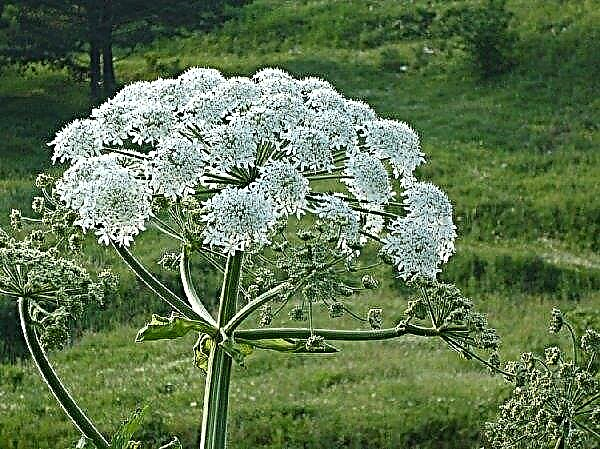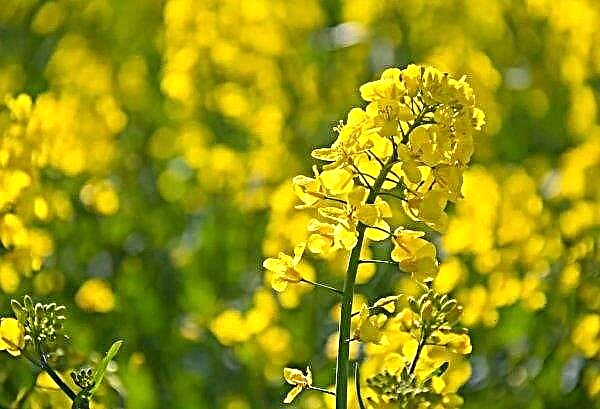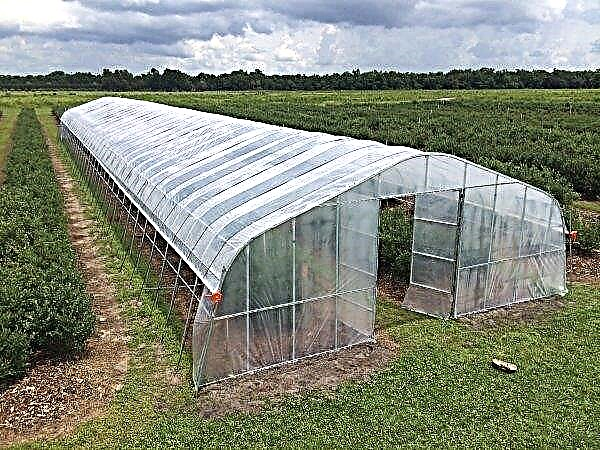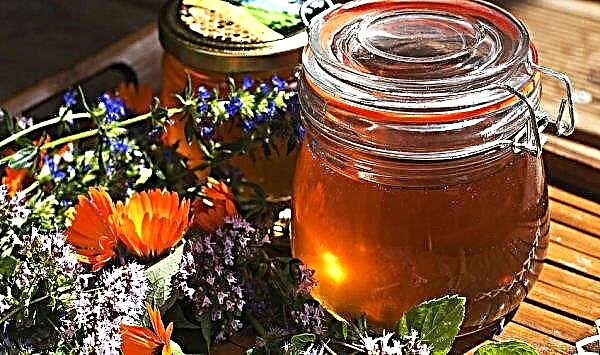Many flower lovers consider the Westerland rose to be one of the most successful varieties among all bush and semi-varieties of roses. Moreover, in addition to the magnificent magnificent color, the plant is resistant to pests, unpretentiousness and ease of cultivation. Learn how to properly plant and care for the bush.
Botanical description of the plant
The Westerland variety owes its birth to the famous breeder Cordes, who bred him in 1969, crossing the golden yellow Friedrich Worlein and the white-pink-orange Circus. The resulting variety was named after a small German town located on the German island of Sylt.
Important! The Westerland variety looks great in mixborders - complex compositions from mixed vegetation and shrubs.
Rose has the following characteristics:
- plant type: climbing and spray roses;
- bush height: up to 200 cm and above;
- bush width: 110–150 cm;
- shoots: strong, developed, thick, average number of spines;
- leaves: elongated, shiny, dark green;
- flower size: in open form - 10-12 cm;
- flower shape: semi-double in the shape of a bowl with wavy edges;
- flower color: saturated orange with a golden yellow center, with time becomes salmon-pink;
- flower fragrance: nice, strong;
- flowering period: early summer - late autumn.
Due to its long flowering, the Westerland variety retains its decorative effect throughout the warm season. It is also characterized by rapid growth, good frost resistance and disease resistance.
Planting seedlings in the open ground
When planting, it is important to choose the right place and time, and then the bush will quickly take over, grow and will please with abundant flowering.
The timing
Bushes with an open root system are planted in the middle of spring or autumn in a well-heated soil. If the bush is already rooted, then it can be transplanted with a lump of earth at any time of the year until frost has come.
Did you know? The oldest rose in the world, which is already around 1000 years old, grows in Germany at the local cathedral of the town of Hildesheim. Despite severe damage during the Second World War, at its end, the bush came to life and, to the delight of the locals, was again covered with lovely, graceful buds.
Seat selection
An open place well lit in the morning and evening is suitable for this variety. It should be noted that the rose does not like direct, scorching, sunlight, which can leave burns on the leaves and lead to rapid wilting of buds.
The plant should not be exposed to strong drafts, but at the same time should not be in dense thickets without access of fresh air. You need to carefully choose a comfortable and protected place for him.
The best place for this variety is loose and light loam on the south side of the house. Also, the soil should be nutritious, containing peat and humus, permeable. If the soil on the site is clay, then it should be dug up with the addition of coarse sand, and sand - with the addition of clay. Improving the structure of the soil will allow the introduction of humus or humus and a small amount of phosphorus.
Step-by-step landing process
The process of planting a bush is as follows:
- Treat the open roots of the rose with any preparation of a growth stimulant according to its instructions.
- Remove all weak and damaged roots of seedlings. Shorten the shoots to 5-10 cm.
- Prepare pits with parameters of about 50x50x50 cm with a distance between them of 50-60 cm.
- At the bottom lay a layer of drainage 10 cm high in the form of gravel, crushed stone or small pebbles.
- Add a layer of rotted compost or manure 10 cm high into the pit and fill it with soil mixture for roses.
- Plant a bush in the center of the pit so that the grafting site is in the ground at a depth of about 3 cm from the surface.
- Tamp the root circle a little, carefully water and spud the bush.
Important! When the groundwater in the area is too close to the surface, it is better to arrange an artificial hill to plant roses.
Care Tips
In order for rose bushes to please you with their health, freshness and active flowering, you should follow simple rules for caring for them.
Watering
Westerland rose bushes should be regularly watered with clean, slightly warm water. Try to water under the root in the morning, avoiding the ingress of water on leaves and flowers. The frequency of irrigation depends on the weather and air temperature. Drying the topsoil is a signal that the bushes need water. However, they should not be too flooded to prevent stagnation of water and decay of the roots.
In the hottest time, the flowering crown can be sprayed from a fine spray. This should be done at sunset, so as not to cause a burn of leaves.
Top dressing
Westerland roses are fed twice a year - in spring and summer before flowering. In spring, bushes need nitrogen, which stimulates the growth of branches and leaves, and in summer, phosphorus-potassium fertilizers or ash. Top dressing should be purchased at flower shops and follow the instructions on the package. The last fertilizer must be applied in July, then the plant will already begin to prepare for winter.
Important! In the cool and rainy period, dark spots may appear on the leaves of the rose. In this case, the damaged leaves are removed, and the bush is treated with fungicide.
Loosening and weed control
After each watering, the soil in the root circle should be loosened, which will improve the flow of air to the root system of the plant. This procedure can be combined with weeding, which will help get rid of weeds and ensure the cleanliness of the site.
To facilitate the care of rose bushes, you can cover the soil with mulch, for example, sawdust. They will retain moisture and will reduce the number of irrigation and weeding.
Pruning
Pruning a rose is one of the obligatory and regular events. Removing old, damaged and weakened branches, as well as dried flowers, will allow the bush not to spend its resources on them, but to let them out to healthy shoots. Pruning also stimulates active re-flowering of the plant. Pruning is done as needed with a clean and sharp pruner or pruning shears. For safety reasons, gloves must be worn.
In the first year, it is recommended to trim the rose well so that it does not bloom. This will allow the plant to grow and root better.
Support
Since this variety is quite tall, for better decorativeness it is better to let it on a support. Walls of buildings, arches and pergolas, fences and nets, special posts and cones can be a great support for the rose.
Some supports can be purchased in special stores or made independently using wooden pegs, battens, metal fittings, thick wire and other improvised materials.
Shelter for the winter
If temperatures below -7 ° C are noted in your area, then Westerland roses must be covered. Shelter is better to build in late autumn, before the first frost. For this, a dense layer of fallen leaves or spruce branches covered with non-woven material is well suited. In spring, overwintered bushes open, old shoots are removed, and young ones are shortened to 25 cm.
With good care, Westerland roses will become a real highlight in the design of any garden or flower garden. They will give a lot of pleasant emotions and surprise guests with magnificent dense flowering and delicate fragrance.Did you know? Many lovers of roses note that their smell positively affects a person. By constantly inhaling the aroma of roses, you can improve your mood, become calmer and more optimistic.












